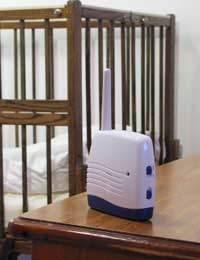Cot Death (SIDS)

Cot death also known as Sudden Infant Death Syndrome or SIDS claims the lives of approximately 500 babies per year in the UK. Little is known about the causes of cot death, but there is information available on how to reduce the risk of cot death occurring. Continue reading for answers to some frequently asked questions about cot death/SIDS.
What is Cot Death?
Cot death refers to the sudden and unexpected death of a baby less than one year old. The name is taken from the fact that this type of death usually takes place while the baby is asleep and therefore is most often in his/her cot. Sudden Infant Death Syndrome, cot death’s other name, refers to the unexpected nature of this type of death. Later, during investigation, no specific cause of death will be found which will lead to the conclusion that cot death was the culprit.Who is Most Frequently Affected By Cot Death?
Cot death can strike in any family, but there are some patterns that have been noted regarding these incidences. For example:- The vast majority of babies who are affected by cot death are between one and six months of age
- Almost 60 per cent of cot deaths happen to male babies
- Premature babies (born before 37 weeks) have a higher likelihood of suffering a cot death
- Having a sibling who died of cot death will put a baby at higher risk
- Babies born with a lower weight (less than 2.5 kg at birth) are more likely to be affected by cot death
How Can Cot Death be Avoided?
Though the precise cause of cot death is not yet known, there are measures that parents can take to reduce the risk of it occurring. Help avoid cot death by:- Allowing your baby to sleep in a cot in your bedroom for the first six months
- Keeping your baby out of your own bed if (s)he is under three months old
- Monitoring your baby with a baby monitor any time (s)he is sleeping in another room
- Keeping all room temperatures around 18 degrees Celsius
- Covering your baby with one or two blankets, avoid covering your baby with too many bedclothes, any type of duvet and allowing him/her to sleep with any pillows. If your baby becomes overheated (his/her stomach feels hot to the touch), remove extra layers. Do not attempt to judge your baby’s temperature by his/her hands and feet as the extremities are likely the coolest areas of your baby’s body.
- Put your baby to sleep on his/her back
- Never cover your baby’s head while (s)he is sleeping
- Do not smoke at any time during or after your pregnancy and never smoke around your (or any) baby
Where Will I Find Further Information About Cot Death?
There are multiple sources of information on cot death available in the UK today. For further information, contact:- Your GP and/or midwife
- The NHS or your maternity hospital
- The Foundation for the Study of Infant Deaths (www.fsid.org.uk)
- The Stillbirth and Neonatal Society (www.uk-sands.org)
Related Articles in the 'After The Birth' Category...
- Post-Birth Contraception Options
- Why Might I Need to Stay in Hospital After Giving Birth?
- Post Birth Checks and Visits
- How Might I Feel After a Natural Delivery?
- How Might I Feel After a Caesarean Section?
- Donating Your Breast Milk
- Post Pregnancy Sex
- Expressing Your Baby Milk
- Baby Naming Ceremonies
- Introducing Baby to Siblings
- Postnatal Depression
- What If Your Baby Has to Stay in Hospital?
- Foods to Eat After The Birth
- Keeping Fit After The Birth
- Returning to Work After Giving Birth
- Dealing with Miscarriage and Still Birth


Re: Ultrasounds - What is EFBW and GMS?
My wife is 32.6 weeks ...and the babys weight is 1971gms...is that normal or not...please reply me.....
Re: Ultrasounds - What is EFBW and GMS?
my 18th week and baby weight 252 it is gud or bad...please tell me....
Re: Ultrasounds - What is EFBW and GMS?
Hello!i have 21 weeks and 4 days pregnancy.. and my EFBW is 430gms.. is that normal?? Will my baby healthy or not??
Re: Abdominal and Pelvic Pain During Pregnancy
Left pelvic pain, backpain pregnency positive' is any problem, already ectopic happen
Re: Ultrasounds - What is EFBW and GMS?
At 24 weeks what should be my baby's EFBW in gm
Re: Ultrasounds - What is EFBW and GMS?
My wife is 21 week 2 day . In scan report EFRW 415 GM is normal or not . Can you please help me to know current status of…
Re: Ultrasounds - What is EFBW and GMS?
I am 34.1wks pregnant my baby weight is 2215gm is my baby healthy
Re: Ultrasounds - What is EFBW and GMS?
My wife is 37weeks 5days pregnant E.F.B.W - 3010 grams how is she
Re: Ultrasounds - What is EFBW and GMS?
I am pregnant of 36 week 2 days and my EFBW is 1949 is it normal..?
Re: Ultrasounds - What is EFBW and GMS?
i had my ultrasound rhis sept 19 i wonder what is rhis number for efbw 2336 stands fir can you please give me an idea…